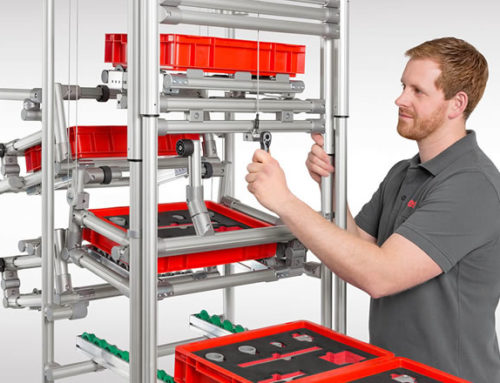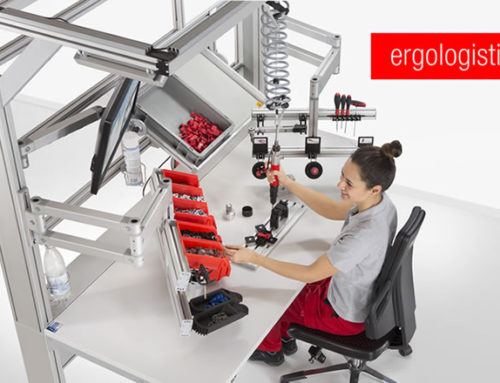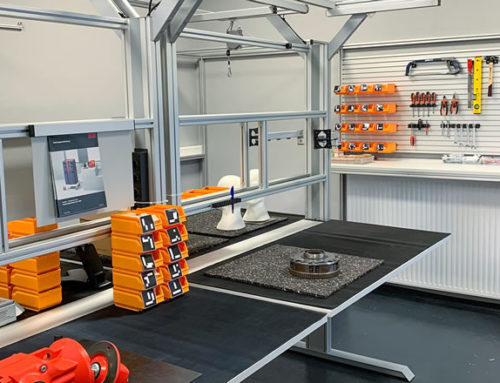Engineers have been continuously developing the humble bicycle for near on 200 years, inventing new approaches for better drives, lighter materials and even a revolutionary bell that might just make our D30 transporter bike even better.
But let’s start with the basics – the mechanical pedal crank drive.
Little about it has changed over the years: It uses pedals and a crank to transfer the cyclist’s physical power to the chain ring. The speed at which the bicycle moves forward varies depending on the length of the pedal crank and the transmission ratio being used. The problem is that some of the cyclist’s pedalling power is lost during transfer to the drive, even when using clipless pedals.
The articulated crank drive
A newly developed drive from long-standing east German manufacturer Möve is set to improve efficiency. In a conventional drive system, power is introduced in pulses, in a narrowly defined range. If you imagine the side view of the crank as a clock face, this range would fall between 2 and 4 o’clock. The power transferred around 3 o’clock makes the biggest contribution to the bike’s forward motion. This is precisely what Möve focused on while developing cyfly. In this drive system, the pedal crank is no longer connected directly to the axle but rather supported behind it. Ultimately, this shortens the pedal path while extending the lever.
The striking oval chain ring is not actually a decisive factor in the drive mechanism, but it does help to make the cycling experience more similar to that of a conventional bike. Under the right conditions, this Easy Cycling technology should improve performance by almost 33 percent. There is, however, a fly in the ointment – due to the lack of a suitable adapter, the system currently needs an adapted frame design and therefore will only be available initially as part of a completely new premium-level bike.
The ringing navigational light system
By contrast, Shoka Bell is fastened to the handlebars with a special clamp, making it a universal solution – one that has real potential judging by the enthusiasm shown for its prototype on the crowdfunding platform Kickstarter. The special clamp connects to a small box that combines two success factors that are well-known to us at item – a modular design and an aluminium construction. Inside the robust metal cover is a series of LEDs. The LEDs at the front provide a light that automatically adapts to ambient lighting levels while those on the top show up as flashing arrows that guide you towards your destination when the Shoka Bell is connected to a special navigational app for the iPhone.
As the name suggests, there is also a bell, albeit one that combines a very simple function with state-of-the-art technology. For example, the digital bell is not just twice as loud as the hand-operated alternative, it also offers different settings for pedestrians and an extra-loud tone for careless drivers. What’s more, the volume of the bell automatically adjusts to ambient noise levels, meaning it is much quieter when sounded in the park via the installed mini-joystick than when used in the midst of urban traffic. When you arrive at your destination, you can simply slip the Shoka Bell off its clamp and take it with you. It gets really loud when the alarm function is tripped, as the clamp mounted to the handlebars also houses the system’s motion sensor. If anybody tries to move your bike, the Shoka Bell in your pocket or bag will sound an alarm within a range of up to 250 metres. As an overall package, the high-tech bell doesn’t really have an awful lot in common with the conventional bicycle bell, and the same applies to its purchase price. Even when taking advantage of the discount for pre-orders, the current price for the Shoka Bell, which weighs less than 100 grams, is well over 100 euros.
Textile bicycle spokes
Also light in weight are the synthetic fibre spokes that four up-and-coming researchers at TU Chemnitz hope will take the bicycle market by storm. They have been developed at the Chair for Conveyor Technology of the university’s Mechanical Engineering faculty. They are much lighter than conventional metal spokes made of stainless steel, for example, and can compete with the carbon versions used predominantly in the professional market. They also seem to offer the right kind of stability – for example, the textile spokes have passed endurance testing equivalent to 100,000 kilometres under laboratory conditions.
Thanks to these successes, the company founders have already been able to secure a grant of 95,000 euros and are now planning an endurance test bench for simulating typical practical requirements. The new system is also going to be tested out on the roads and across country soon. Things are looking good, as the fibre constructs, which feature a special coating to protect them against environmental influences, are theoretically much more tear-resistant than steel. All the same, the team has many hours of work ahead of it before their spokes are ready for series production. No launch date has been set as yet, while cyfly and the Shoka Bell should be available to buy from 2017. In any case, we’re already excited about how these three projects could influence our D30 transporter bicycle.









